SEO is largely a zero sum game. It's just part of how it works. For any given search query, only ten pages can rank on the first page. While results are customized for individual users to some extent, it's still an incredibly competitive landscape.
For solopreneurs, trying to get your pages to rank can feel like an uphill battle. Sometimes, there are keywords where the SERPs are dominated by big authority sites and multinational brands. It can seem impossible to even try to compete.
But, for smart digital marketers, there are ways of beating out even the stiffest competition.
Brad Zomick, the former Director of Content Marketing at CRM software company Pipedrive, proved this fact when he successfully ranked for a high volume keyword with a lot of competition from bigger, better-known companies.
And even more impressively, he did this in just three months.
What keywords did they target, and why? And what kind of content is capable of propelling a small brand's page to the top of the SERPs for a highly competitive search query?
For Zomick's team at Pipedrive, the first step to dominating the SERPs was to choose the right topic. This starts with keyword research.
Here's a step by step rundown of what Zomick did to select the right keyword to target, then create a badass blog post around it.
Step 1: Finding a good topic
We wanted three things from our target keyword:
1. Significant keyword volume
If you’re going to spend months ranking for a single keyword, you need to pick something big enough to justify the effort.
In our case, we settled on a keyword with 9,900 searches each month as per the Keyword Planner (1k–10k range after the last update).
That same keyword registered a search volume of 1.7–2.9k in Moz Keyword Explorer, so take AdWords’ estimates with a grain of salt.
One way to settle on a target volume is to see it in terms of your conversion rate and buyer’s journey:
Buyer’s journey: Search volume decreases as customers move further along the buyer’s journey. Fewer searches are okay if you’re targeting Decision-stage keywords.
Conversion rate: The stronger your conversion rate for each stage of the buyer’s journey, the more you can get away with by targeting a low search volume keyword.
Also consider the actual traffic from the keyword, not just search volume.For instance, we knew from Moz’s research that the first result gets about 30% of all clicks.
For a keyword with 9,900 search volume, this would translate into over 3,000 visitors/month for a top position.
If we could convert even 5% of these into leads, we’d net over 1,800 leads each year, which makes it worth our time.
2. Pick a winnable topic
Some SERPs are incredibly competitive. For instance, if you’re trying to rank for “content marketing,” you’ll find that the first page is dominated by CMI (DA 84):

[image source: Moz]You might be able to fight out a first-page rank, but it’s really not worth the effort in 99% of cases.
So our second requirement was to see if we could actually rank for our shortlisted keywords.
This can be done in one of two ways:
Informal method
The old-fashioned way to gauge keyword difficulty is to simply eyeball SERPs for your selected keywords.
If you see a lot of older articles, web 1.0 pages, unrecognizable brands, and generic content sites, the keyword should be solid.
On the other hand, if the first page is dominated by big niche brands with in-depth articles, you’ll have a hard time ranking well.
I also recommend using the MozBar to check metrics on the fly. If you see a ton of high DA/PA pages, move on to another keyword.
In our case, the top results mostly comprised of generic content sites or newish domains.
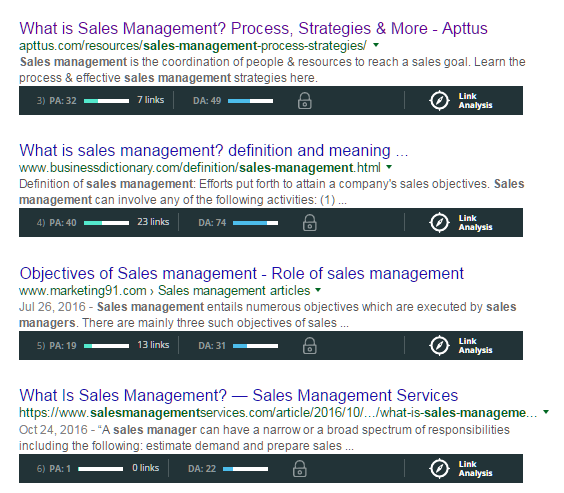
[image source: Moz]Moz Keyword Explorer
Moz’s Keyword Explorer gives you a more quantifiable way to gauge keyword difficulty. You’ll get actual difficulty vs. potential scores.
Aim for a competitiveness score under 50 and opportunity/potential scores above 50. If you get scores beyond this threshold, keep looking.

[image source: Moz]Of course, if you have an established domain, you can target more difficult keywords.
Following this step, we had a shortlist of four keywords:
1. sales techniques (8100)
2. sales process (8100)
3. sales management (9900)
4. sales forecast (4400)
We could have honestly picked anything from this list, but for added impact, we decided to add another filter.
3. Strategic relevance
If you’re going to turn visitors into leads, it’s important to focus on keywords that are strategically relevant to your conversion goals.
In our case, we chose “sales management” as the target keyword.
We did this because Pipedrive is a sales management tool, so the keyword describes us perfectly.
Additionally, a small business owner searching for “sales management” has likely moved from Awareness to Consideration and thus, is one step closer to buying.
In contrast, “sales techniques” and “sales forecast” are keywords a sales person would search for, not a sales leader or small business owner (decision-makers).
Step 2: Writing a bad-ass piece of content
Content might not be king anymore, but it is still the foundation of good SEO. We wanted to get this part absolutely right.
Here’s the process we followed to create our content:
1. Extremely thorough research
We had a simple goal from the start: create something substantially better than anything in the top SERPs.
To get there, we started by reviewing every article ranking for “sales management,” noting what we liked and what we didn’t.
For instance, we liked how InsightSquared started the article with a substantive quote. We didn’t like how Apptus went overboard with headers.
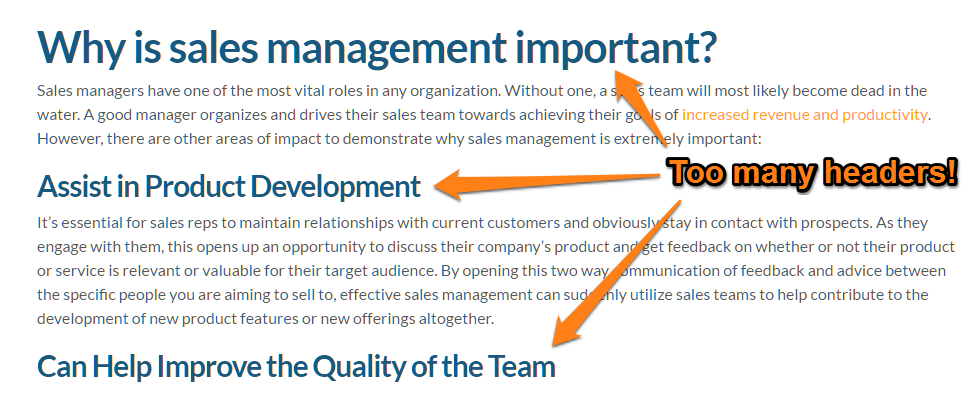
[image source: Moz]We also looked for anomalies. One thing that caught our attention was that two of the top 10 results were dedicated to the keyword “sales manager.”
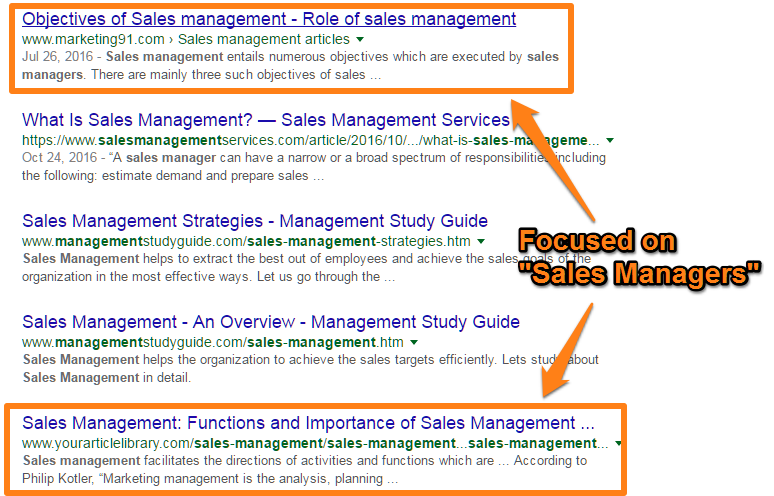
[image source: Moz]We took note of this and made sure to talk about “sales managers” in our article.
We also looked at related searches at the bottom of the page:

[image source: Moz]We also scoured more than 50 sales-related books for chapters about sales management.
Finally, we also talked to some real salespeople. This step helped us add expert insight that outsourced article writers just don’t have.
At the end, we had a superior outline of what we were going to write.
2. Content creation
You don’t need to be a subject matter expert to create an excellent piece of content.
What you do need is good writing skills… and the discipline to actually finish an article.
Adopt a journalistic style where you report insight from experts. This gives you a better end-product since you’re curating insight and writing it far better than subject matter experts.
Unfortunately, there is no magic bullet to speed up the writing part — you’ll just have to grind it out. Set aside a few days at least to write anything substantive.
There are a few things we learned through the content creation experience:
Don’t multi-task.
Go all-in on writing and don’t stop until it’s done.
Work alone.
Writing is a solitary endeavor. Work in a place where you won’t be bothered by coworkers.
Listen to ambient music.
Search “homework edit” on YouTube for some ambient tracks, or use a site like
Take tip #1 as non-negotiable. We tried to juggle a couple of projects and finishing the article ended up taking two weeks. Learn from our mistake — focus on writing alone!
Before you hit publish, make sure to get some editorial feedback from someone on your team, or if possible, a professional editor.
We also added a note at the end of the article where we solicit feedback for future revisions.
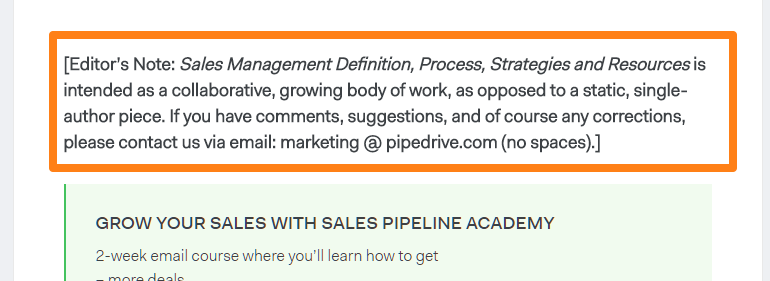
[image source: Moz]If you can’t get access to editors, at the very least put your article through Grammarly.
3. Add lots of visuals and make content more readable
Getting visuals in B2B content can be surprisingly challenging. This is mostly due to the fact that there are a lot of abstract, hard-to-visualize concepts in B2B writing.
This is why we found a lot of blog posts like this with meaningless stock images:
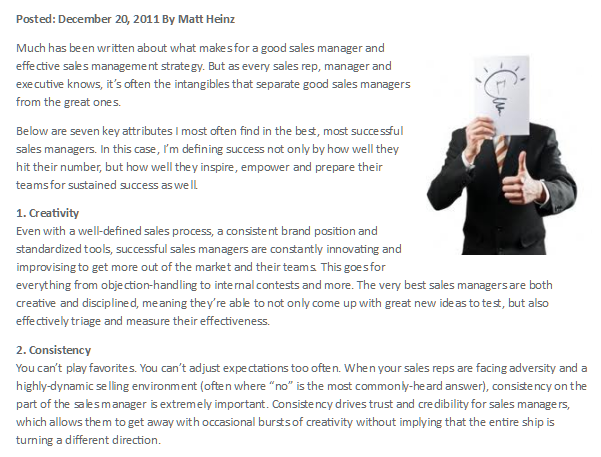
[image source: Moz]To avoid this, we decided to use four custom images spread throughout the article.
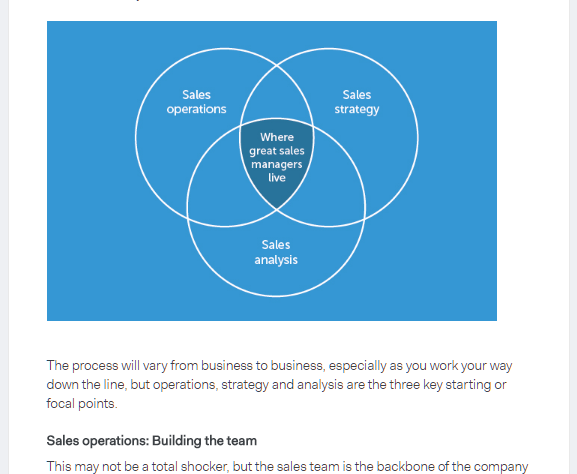
[image source: Moz]We wanted to use visuals to:
– Illustrate abstract concepts and ideas
– Break up the content into more readable chunks.
– Emphasize key takeaways in a readily digestible format
We could have done even more — prolific content creators like Neil Patel often use images every 200–300 words.
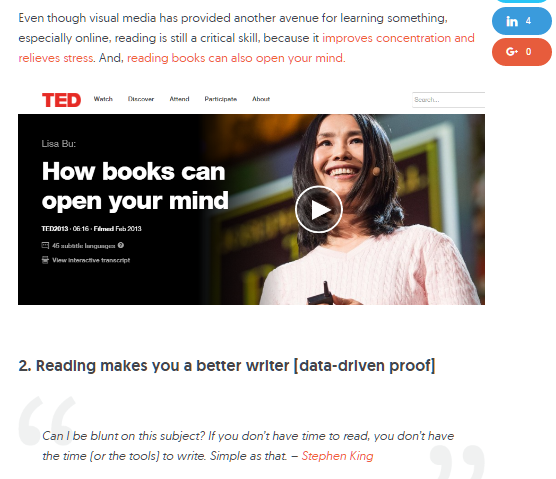
[image source: Moz]Aside from imagery, there are a few other ways to break up and highlight text to make your content more readable.
– Section headers
– Bullets and numbered lists
– Small paragraphs
– Highlighted text
– Blockquotes
– Use simple words
We used most of these tactics, especially blockquotes to create sub-sections.
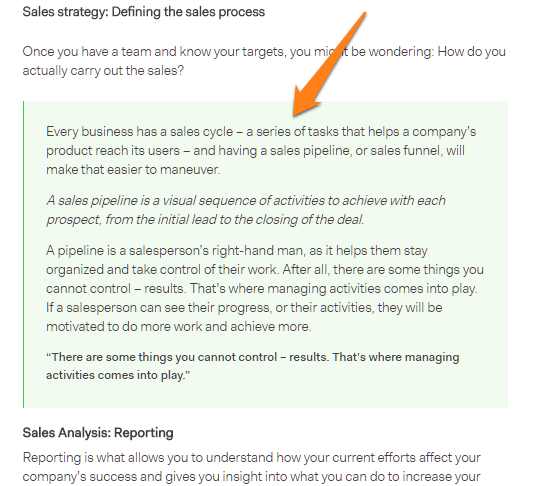
[image source: Moz]Given our audience — sales leaders and managers — we didn’t have to bother with dumbing down our writing. But if you’re worried that your writing is too complex, try using an app like Hemingwayto edit your draft.
Planning and creating the content itself was just the beginning of Pipedrive's journey to that coveted #1 slot. You can read more over at Moz about the exact tactics they used to make it to the top.
[adrotate group=”6″]
[adrotate group=”5″]
CHALLENGE Yourself to Profit!
Free Download: Build Your Profit-Generating Online Business With This Free Blueprint
Sign Up, follow the easy steps and You'll get the tactics, strategies & techniques needed to create your online profit stream. It's free!

